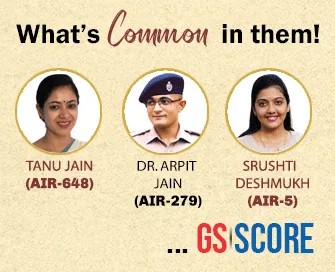

8th July 2025 (3 Topics)
Context:
The Election Commission’s Special Intensive Revision of electoral rolls in Bihar has drawn criticism for imposing complex citizenship documentation, raising fears of mass voter exclusion and a backdoor NRC-like exercise.
Procedural Flaws and Documentation Crisis
- Timing and Frequency of Revision:The last intensive revision occurred in 2003; a special summary revision was just completed in January 2025. Initiating another intensive revision just weeks before elections raises concerns about the credibility and intent behind the timing.
- Unprecedented Documentation Requirements:Citizens are now required to produce proof of citizenship from a list of 11 documents, many of which are inaccessible to marginalized populations. This level of stringency is unprecedented in the history of electoral roll revision.
- Complex Age-Based Proof Burden:Proof requirements differ based on age cohorts (pre-1987, 1987–2004, post-2004), demanding multi-generational documentary evidence. This disproportionately burdens youth and migrant families who may lack stable documentation infrastructure.
Exclusionary Bias and Administrative Arbitrary Power
- Socially Biased Document List:Most of the accepted documents (educational, property-related, government service-based) privilege the propertied and educated, reflecting colonial-era suffrage limitations and systematically disadvantaging the poor.
- Aadhaar and MGNREGA Excluded:Commonly held documents like Aadhaar and MGNREGA cards are explicitly excluded, revealing disconnect from ground-level documentation realities and enhancing the arbitrariness of the process.
- Discretionary Power of Local Officials:While EROs are empowered to conduct inquiries and hearings, the lack of time, training, and resources amplifies discretion and scope for bias, especially in administratively weak states like Bihar.
Structural Ramifications and Democratic Fallout
- Opaque Appeals and Fear of Foreigners Tribunal: Citizens whose status is flagged risk referral to Foreigners Tribunals, evoking memories of NRC-linked legal harassment in Assam, and further eroding public trust.
- Replication of Demonetisation-like Disruption:Like demonetisation, this order imposes state-induced anxiety and disrupts daily life, especially with seasonal floods and labour migration already impacting lakhs of Bihari households.
- Violation of Democratic Ethos:Voting, being central to citizenship and republican values, demands a transparent, inclusive, and citizen-friendly process. This current exercise, lacking in fairness and readiness, undermines these democratic foundations.
Practice Question:
“The Special Intensive Revision of Electoral Rolls in Bihar reveals deeper structural biases in bureaucratic governance.” Critically examine in the context of voter disenfranchisement, constitutional safeguards, and democratic accountability. (250 words)


Context:
India's Maternal Mortality Ratio (MMR) has declined to 93 per 1,00,000 live births during 2019–21 (as per SRS data), but stark regional disparities, persistent systemic delays, and avoidable deaths continue, especially in EAG states.
Persisting Disparities in Maternal Mortality
- Stark Regional Contrasts in MMR:While Kerala reports the lowest MMR at 20, states like Madhya Pradesh (175) and Assam (167) continue to witness alarmingly high maternal deaths. Southern states have consistently performed better than EAG states in maternal health indicators.
- Inadequate Functioning of FRUs:The idea of operationalising four First Referral Units (FRUs) per district has been inadequately implemented. Of the 5,491 CHCs, 66% face specialist shortages, and many lack functional blood banks, undermining emergency obstetric care.
- Need for Cluster-Based Strategy:A differentiated approach is essential—EAG states must focus on basic access, early registration, and institutional deliveries, while southern and western states should emphasize quality improvement in emergency obstetric services.
The Three Delays Leading to Maternal Deaths
- Delay in Decision-Making at Household Level:Families often delay seeking care due to lack of awareness, financial constraints, or cultural inertia. Empowerment through ASHA-ANM networks and JSY incentives has improved outcomes but gaps remain.
- Delay in Reaching Healthcare Facilities:In remote rural and tribal regions, transportation delays can be fatal. While the 108 ambulance system under NHM has improved access, infrastructural limitations still restrict timely referrals.
- Delay in Receiving Adequate Care at Facilities:Hospitals often fail to provide timely interventions due to lack of specialists, OT readiness, blood availability, or absence of anaesthetists—making this the most avoidable but recurring delay.
Clinical Causes and the Way Forward
- Major Medical Causes of Maternal Deaths:Leading causes include postpartum haemorrhage, obstructed labour, hypertensive disorders, sepsis, and unsafe abortions. Poor antenatal care and untreated anaemia exacerbate these risks.
- Technical and Surgical Interventions:Kerala’s model uses uterine artery clamps, suction canulas, and proactive management of complications like amniotic embolism. These innovations reflect high-quality care not yet mainstreamed across India.
- Strengthening Surveillance and Mental Health Care:Mandatory audits under NHM and confidential reviews in Kerala help pinpoint failures. Kerala even integrates care for antenatal depression and postpartum psychosis, underscoring a holistic maternal health approach.
Practice Question:
Despite a decline in India’s Maternal Mortality Ratio, systemic delays and regional disparities remain critical concerns. Examine the causes and suggest targeted policy interventions to address maternal mortality in high-burden states. (250 words)


Context:
India's assumption of the BRICS Chairmanship in 2025 has sparked concerns over the forum’s declining strategic relevance and internal contradictions, especially in light of shifting global power dynamics.
Internal Contradictions Undermine BRICS Unity
- Bilateral Tensions Among BRICS Members:The notion of BRICS as a unified bloc is contradicted by India-China strategic rivalry, Saudi-UAE tensions with Iran, and disparate foreign policy goals, undermining collective coherence.
- Divergent Responses to U.S. Pressure:While BRICS champions multilateralism, member countries like China, India, and Vietnam are negotiating bilateral trade deals with the U.S., bypassing WTO mechanisms and weakening BRICS’ stated agenda of global trade reform.
- Geopolitical Posturing Without Substance:BRICS declarations reiterate themes like a “multipolar world” and “Global South solidarity”, but lack credible strategies to confront or reform the Bretton Woods institutions, WTO, or global security frameworks.
Misalignment with India’s Strategic Priorities
- China Poses Greater Threat than U.S. Hegemony:For India, the border conflict with China, trade imbalances, and strategic competition in the Indo-Pacific are more pressing than contesting U.S. influence, making BRICS’ anti-West posturing strategically incoherent.
- Erosion of Foundational Relevance:India co-founded BRICS to promote South-South cooperation and economic multipolarity, but these objectives no longer align with current geoeconomic realities, especially given China's growing dominance within the group.
- Opportunity Cost of Diplomatic Investment:New Delhi continues to invest political capital and bureaucratic effort into BRICS despite the diminishing strategic returns, raising questions about institutional inertia and foreign policy groupthink.
Strategic Recalibration and the Need for Realism
- Failure to Counter Global Churn:The Rio Declaration offers no substantive response to U.S. actions under Trump that have reshaped the global economic and trade architecture, exposing BRICS’ inability to offer credible alternatives.
- India’s Chairmanship – A Moment for Reflection:As India assumes the 2026 BRICS presidency, it must reassess its goals, push for reforms within the forum, or redefine its engagement strategy in line with national interest and strategic clarity.
- Reorienting Towards More Effective Multilaterals:India could benefit more from QUAD, IPEF, or G20 platforms, where its economic, security, and geopolitical interests are better represented and operational outcomes are more achievable.
Practice Question:
Critically evaluate India’s continued engagement with BRICS in light of the forum’s internal contradictions and shifting global power dynamics. Should India recalibrate its multilateral commitments? (250 words)



